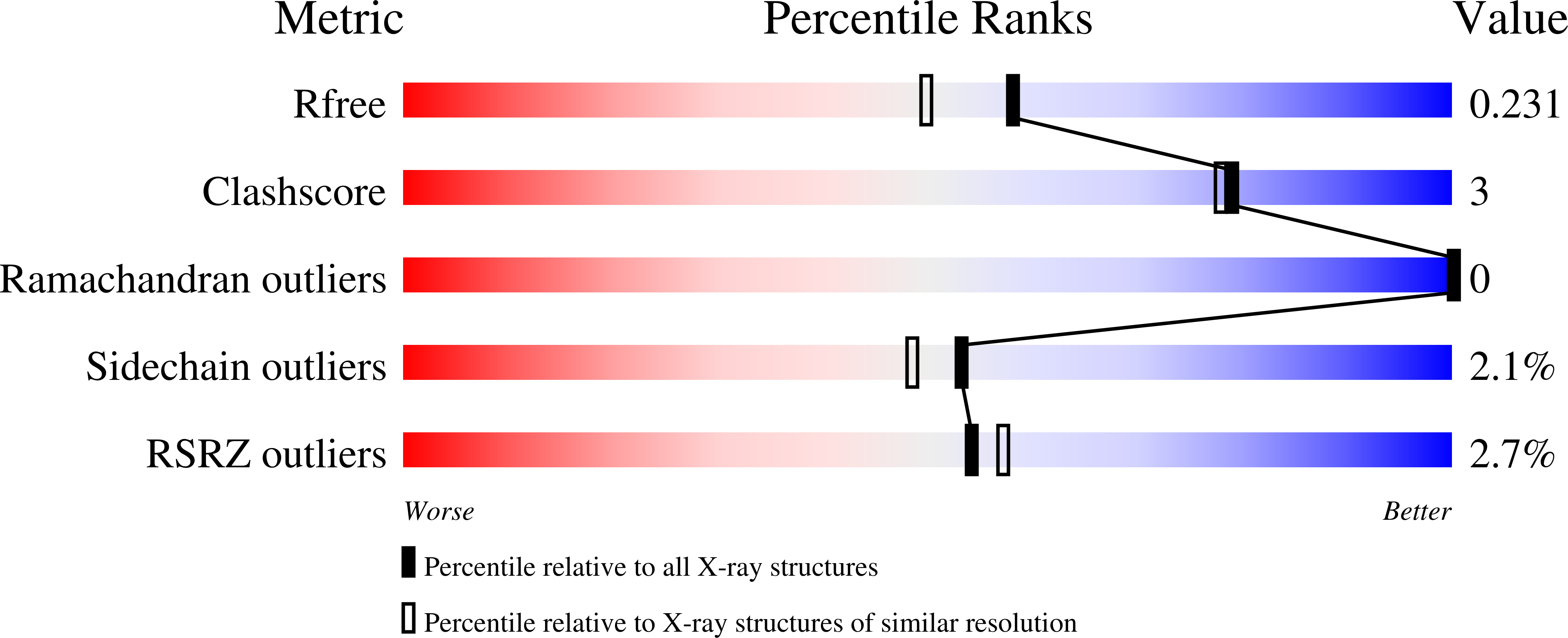Structure of Quinolinate Synthase from Pyrococcus horikoshii in the Presence of Its Product, Quinolinic Acid.
Esakova, O.A., Silakov, A., Grove, T.L., Saunders, A.H., McLaughlin, M.I., Yennawar, N.H., Booker, S.J.(2016) J Am Chem Soc 138: 7224-7227
- PubMed: 27224840
- DOI: https://doi.org/10.1021/jacs.6b02708
- Primary Citation of Related Structures:
4ZK6 - PubMed Abstract:
Quinolinic acid (QA) is a common intermediate in the biosynthesis of nicotinamide adenine dinucleotide (NAD(+)) and its derivatives in all organisms that synthesize the molecule de novo. In most prokaryotes, it is formed from the condensation of dihydroxyacetone phosphate (DHAP) and aspartate-enamine by the action of quinolinate synthase (NadA). NadA contains a [4Fe-4S] cluster cofactor with a unique, non-cysteinyl-ligated, iron ion (Fea), which is proposed to bind the hydroxyl group of a postulated intermediate in the last step of the reaction to facilitate a dehydration. However, direct evidence for this role in catalysis has yet to be provided. Herein, we present the structure of NadA in the presence of the product of its reaction, QA. We find that N1 and the C7 carboxylate group of QA ligate to Fea in a bidentate fashion, which is confirmed by Hyperfine Sublevel Correlation (HYSCORE) spectroscopy. This binding mode would place the C5 hydroxyl group of the postulated final intermediate distal to Fea and virtually incapable of coordinating to it. The structure shows that three strictly conserved amino acids, Glu198, Tyr109, and Tyr23, are in close proximity to the bound product. Substitution of these amino acids with Gln, Phe, and Phe, respectively, leads to complete loss of activity.
Organizational Affiliation:
Departments of †Chemistry and ‡Biochemistry and Molecular Biology, #The Huck Institutes for Life Sciences, and §The Howard Hughes Medical Institute, The Pennsylvania State University , University Park, Pennsylvania 16802, United States.



















